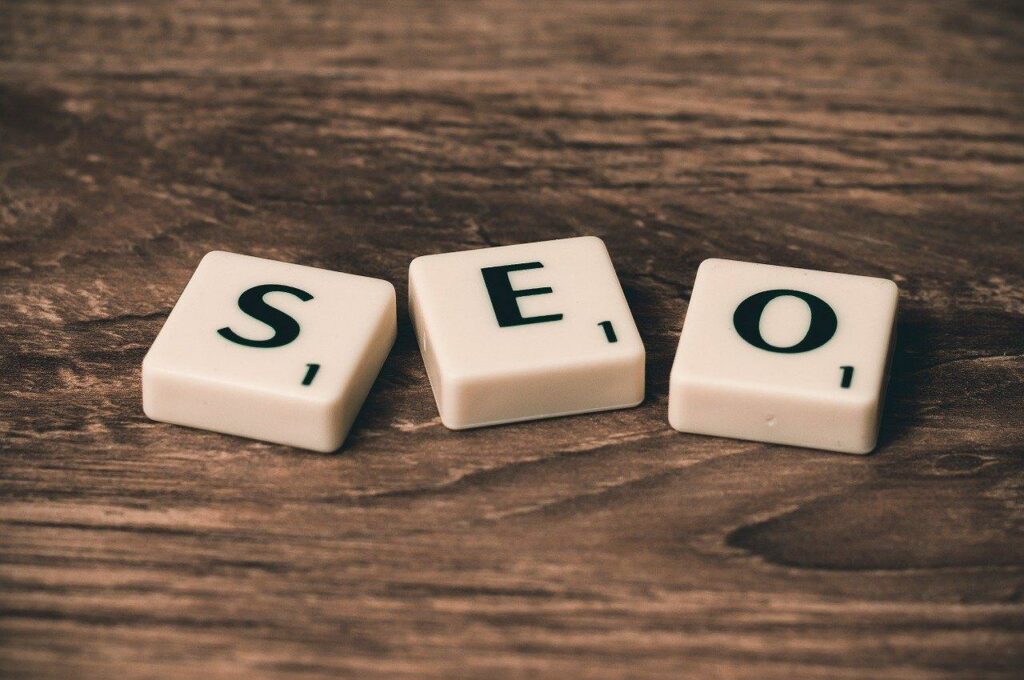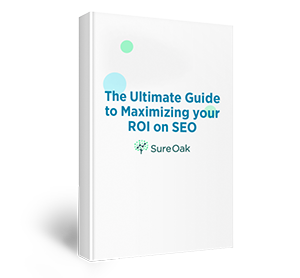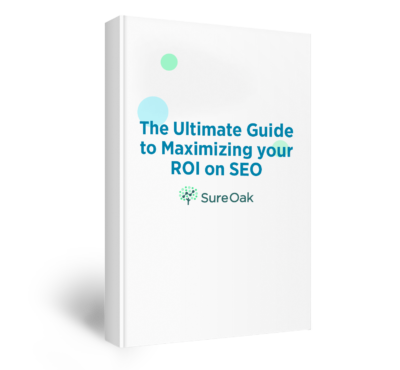An effective landing page can be the difference between success and failure for your business. With the right optimization strategies, you can ensure that your website is seen by as many people as possible while driving conversions.
Landing page SEO is a powerful tool to help you achieve this goal, but you’ll need to understand how it works to get the most out of it. This blog post will cover SEO for landing pages and provide seven best practices to help you rank higher in search engine results pages (SERPs). By following these tips, you’ll be able to create a landing page that drives more traffic and increases conversions from organic search results.
What Is an SEO Landing Page vs. a PPC Landing Page?
An SEO landing page is a page on your website optimized for visibility in organic search engine results. When someone searches for a relevant keyword, your page should appear at the top of the SERPs.
PPC (pay-per-click) landing pages are created to drive traffic from paid advertising campaigns. Depending on the campaign, your PPC landing page may or may not be optimized for SEO.
While there are some similarities between SEO and PPC landing pages (such as the need to have a persuasive headline and relevant, high-quality content), it’s important to note that they serve different functions.
SEO landing pages are designed to rank higher in organic search results and bring more traffic to your website. PPC landing pages focus on driving conversions from paid ads.
What Is Landing Page Optimization?
Landing page optimization is the process of optimizing your website’s landing pages for better performance. Depending on the type of landing page you’re trying to optimize, this process could involve a variety of tactics.
SEO Landing Pages

To optimize your SEO landing pages, you’ll need to focus on how search engine bots crawl and index your page. This includes optimizing your content with relevant landing page keywords, using meta tags to provide further context for search engine crawlers, and ensuring that all of the links on your landing page are working correctly.
You’ll also want to improve user experience. Make sure your landing pages load quickly, are easy to navigate, and provide valuable information that encourages visitors to stay and explore your website.
Finally, you’ll want to focus on improving the visibility of your landing page in SERPs. These techniques could involve link building, creating internal links from other pages on your website, or submitting a sitemap to search engines.
PPC Landing Pages
You’ll want to focus on increasing conversions when optimizing PPC landing pages. You could test different headline and copy variations, A/B test your page design or use targeted ads to find the right audience.
You’ll also want to ensure that your PPC landing page works well on mobile devices. This means ensuring the page loads quickly, has a responsive design, and provides an easy-to-use interface.
How To Optimize a Landing Page: 7 Best Practices for Landing Pages
Now that you better understand what makes a great SEO landing page let’s look at seven landing page optimization best practices to help you get the most out of your efforts.
1. Use an SEO Keyword Strategy
The first step in optimizing your landing page is identifying the primary keyword you want to target. Then, include it in your page titles, meta descriptions, headings, and body content to help search engine crawlers easily find and index your page when people search for relevant terms.
Your keyword strategy should also include secondary keywords related to your primary keyword. This will help you reach a wider audience by increasing the chances of appearing in search engine results for multiple terms.
Some tips for finding the right keywords for your landing page:
- Use keyword research tools like Google Keyword Planner to identify terms that are relevant to your topic.
- Analyze the search volumes for each keyword and prioritize the ones with the highest volume.
- Monitor changes in search intent to understand how people are searching for your topic.
Once you’ve picked some keywords to target, further analyze their difficulty level and search engine competition to determine if you have a realistic chance of ranking on the first page of Google.
2. Research Competitor Landing Page Strategies
Researching your competitor’s landing page strategy can give you valuable insights that you can use to make your page even better.
Some aspects to research include the types of content they’re using, the keywords they’re targeting, and how they’re optimizing their pages for SEO. This information can give you a better understanding of what works in your industry and provide ideas on how to make your landing page stand out from the competition.
After researching your competitors, create a list of the strategies you’d like to test on your page. This could include creating more content around related topics, using different keywords, or increasing backlinks to the page.
It may not be enough to duplicate what your competitors are doing. By comparing and contrasting different strategies, you can create a unique page that stands out from the competition.
3. Use SEO Best Practices To Optimize Landing Pages
Once you’ve identified your keywords and competitor strategies, optimizing your landing page for SEO is the next step. Your on-page optimization will involve technical and content-related adjustments, such as optimizing the page’s title tags and meta descriptions, ensuring that all of the links on your landing page are functioning correctly, and including relevant keywords in your body content.
For those who are looking for comprehensive assistance in this area, our on-page SEO services can guide you through the process.
You should also optimize the user experience by making sure your pages load quickly, providing a clean design with easy-to-understand navigation, and including valuable content that encourages visitors to stay and explore your website further.
Search engines measure user experience by looking at how much time visitors spend on a page and whether or not they click through to other pages on your website. The better the user experience, the higher your SEO rankings will be.
Use Keyword-focused Heading Tags
Heading tags are an essential part of optimizing your landing page for SEO. They help search engine crawlers understand the structure of your content and make it easier for users to find the information they’re looking for.
When creating heading tags, be sure to include relevant keywords that you want to target. This will help boost your page’s visibility in SERPs and provide valuable context to visitors searching for the topics you cover.
Use Your Primary Keyword in the Meta Description and First Body Paragraph
The meta description is a short snippet of text that appears in SERPs when someone searches for relevant terms. It’s important to include your primary keyword in the meta description, as this will help search engines understand what your page is about and increase its chances of appearing in results.
You should also include your primary keyword in the first body paragraph of your landing page’s content to search engine crawlers understand the context of your page and increase its visibility in SERPs.
Use Internal Links To Guide Visitors
Internal links are an integral part of optimizing your landing page for SEO. By linking to other pages on your website, you can guide visitors toward other relevant pieces of content and encourage them to explore more areas of your site.
Internal links also help search engine crawlers determine your website’s structure and assess each page’s relevance.
Create a Sitemap and Submit to Google Search Console
A sitemap is a list of all the pages on your website. Creating and submitting a sitemap to Google’s Search Console lets search engine crawlers know about any new pages or changes you’ve made to existing ones.
Submitting a sitemap will help search engines index your website and understand the structure of your content. This can improve your rankings in SERPs and give visitors a better experience when exploring your pages.
4. Use CRO Best Practices and Include Social Proof
CRO (conversion rate optimization) is optimizing your page to maximize conversions. This can involve making changes to the design of your page, such as adding customer testimonials or reviews or experimenting with different content formats.
Social proof is an effective way to increase conversions on your landing page. When people see that others have had positive experiences with your product or service, they are more likely to convert themselves.
Including customer reviews, case studies, and testimonials can demonstrate the quality of your offering and make visitors more likely to take action. In addition, using CRO best practices and including social proof on your landing page can help build trust and boost conversions.
5. Use a Properly Optimized URL
A properly optimized URL is key to improving the visibility of your landing page in search engine results. URLs should be short, readable, and include relevant keywords that help search engines better understand what the page is about.
Landing Page URL Best Practices
Keep a few best practices in mind when creating or optimizing your landing page URLs:
- Use relevant keywords in the URL
- Keep it short, descriptive, and easy to remember
- Avoid using special characters, such as $ % & / \
- Use hyphens (-) to separate words
Properly Optimized URL Example
So what is a properly optimized URL? Let’s say you’re optimizing a landing page for the keyword “SEO copywriting.” The properly optimized URL for this page would be:
www.example.com/seo-copywriting
Notice that the URL includes the target keyword, is concise, and uses hyphens to separate the words.
6. Optimize Page Speed and Core Web Vitals
Page speed optimization is essential to SEO, as it helps ensure that your page loads quickly and provides a good user experience.

Google uses the Core Web Vitals metrics to measure page experience. These include the Largest Contentful Paint (LCP), First Input Delay (FID), and Cumulative Layout Shift (CLS) — all of which are used to determine how quickly a page loads and how stable it is.
To optimize your site’s page speed, you can use landing page optimization tools like Google PageSpeed Insights or Lighthouse to analyze your landing pages and identify any issues that may slow them down. You can then address these issues with optimizations such as minifying CSS and JavaScript, compressing images, leveraging browser caching, and reducing redirects.
7. Increase Page Authority With a Backlinking Strategy
Backlinks are one of the most critical factors in SEO, as they help boost a page’s authority and credibility. Search engines view pages with high-quality backlinks as more trustworthy and relevant than those without them.
To increase your landing page’s backlink profile, you can use link-building strategies such as guest blogging, directory listings, and broken link building. You can also reach out to influencers in your industry and ask them to share or link to your page.
You should also monitor the quality of your backlinks and ensure they come from reputable sources. Low-quality backlinks can harm your SEO, so it’s important to check in regularly and remove any that could be damaging.
Get Help Optimizing Your Landing Pages Today
Optimized landing pages are an invaluable part of improving the visibility and authority of your website. By following the tips above, you can ensure that your landing page ranks well in search engine results and drives more conversions.
However, optimizing landing pages can be time-consuming and complex — if you don’t have experience with SEO, you may not know where to start. That’s why many businesses partner with a landing page optimization consultant to help handle their website optimization needs.
At Sure Oak, we specialize in helping businesses of all sizes optimize their landing pages for search engine visibility and conversions. Our experienced team of SEO experts can identify opportunities for improvement, deploy white-hat tactics, and monitor results to ensure your site is performing its best.
Grow your organic traffic and take your business to the next level with landing page optimization services from Sure Oak. Contact us today to learn more about our services and get started on your SEO journey.





